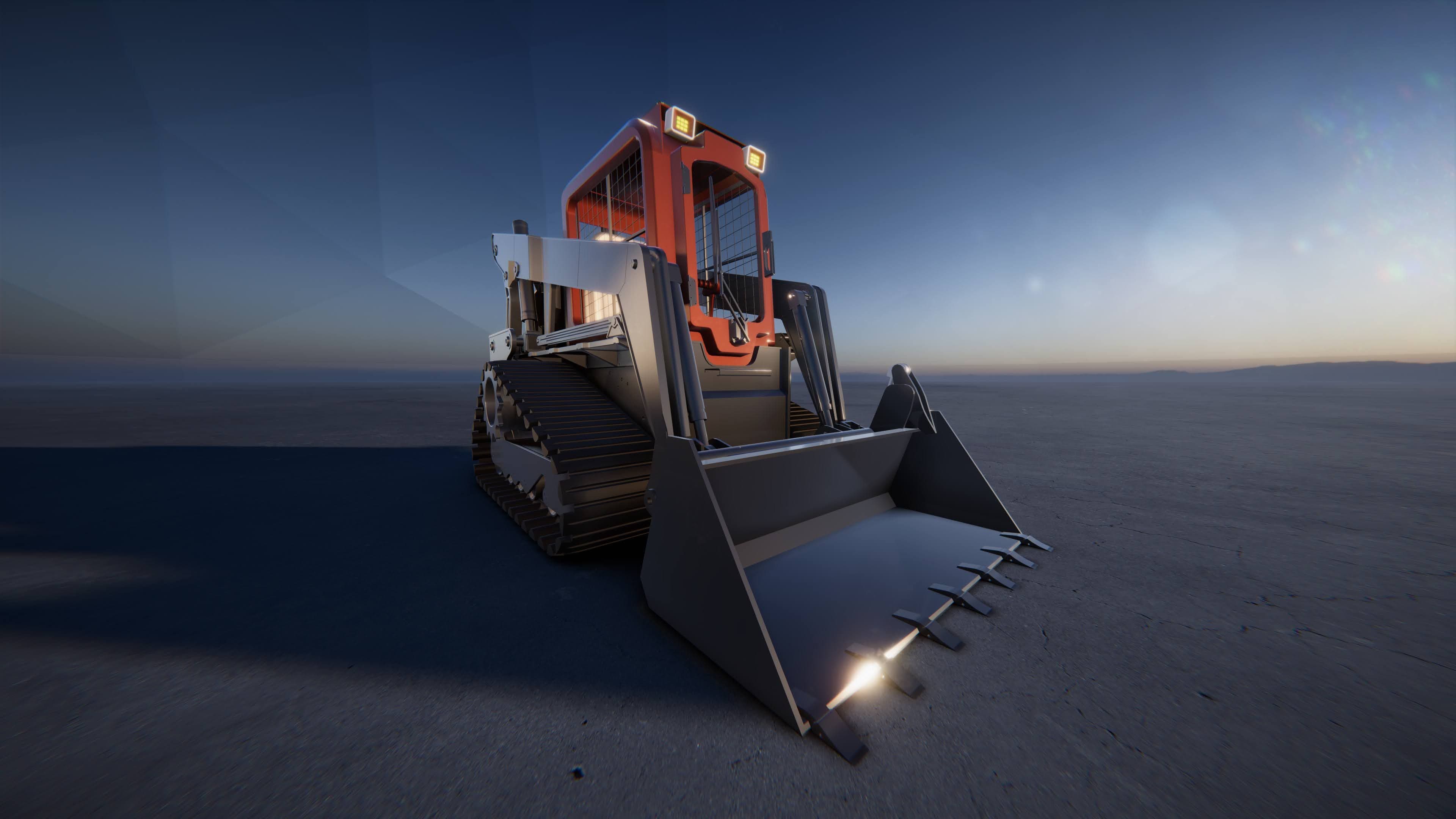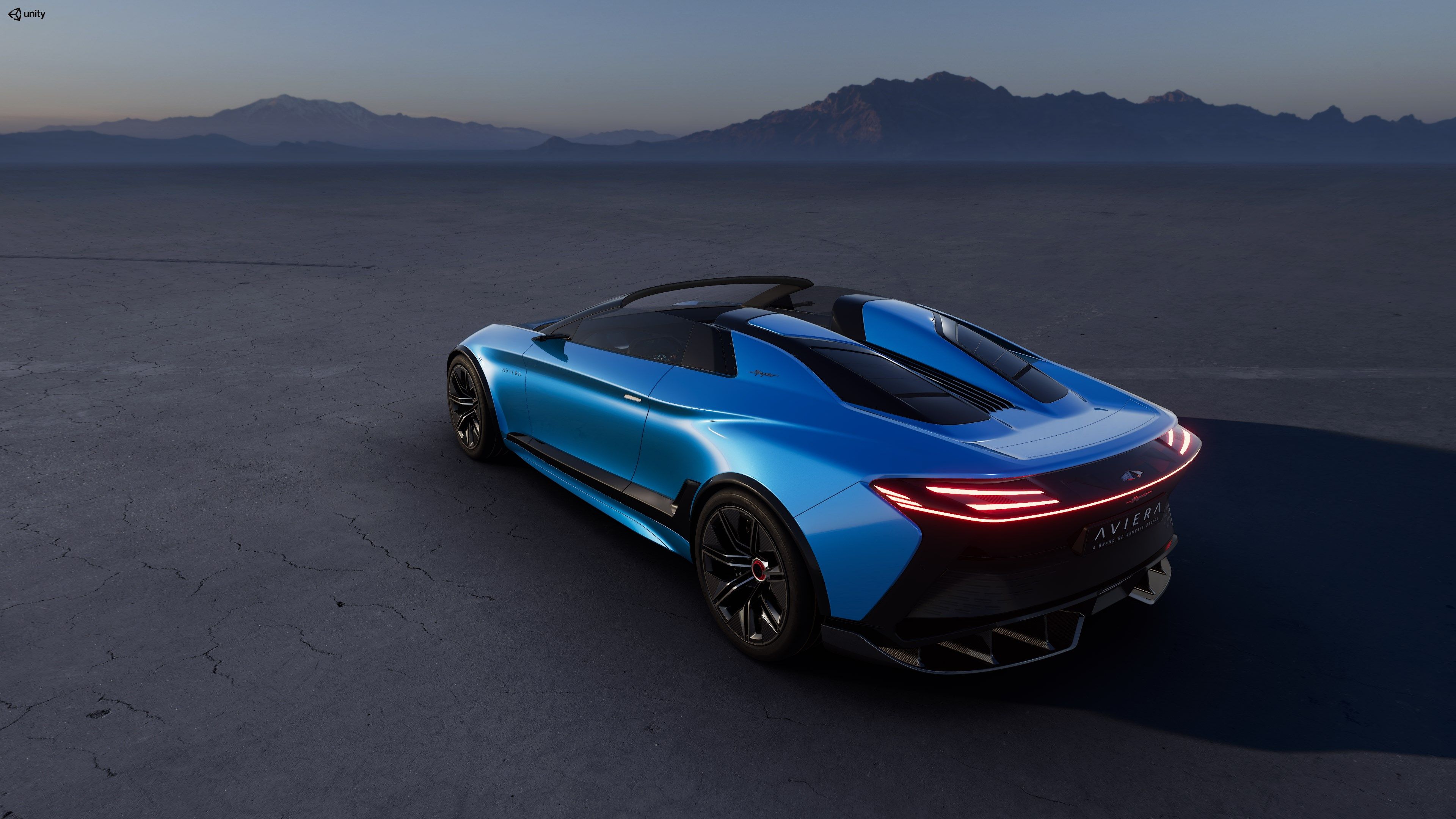
3D 시각화란 무엇인가요?
디지털 트윈을 위한 3D 시각화, 설명
3D 시각화는 실생활에 존재하거나 곧 존재할 물체를 3D로 디자인하는 기술적이고 예술적인 다단계 프로세스입니다. 제조, 건축, 멀티미디어 등 다양한 산업 분야에서 사용되는 3D 시각화는 그래픽을 형태와 깊이감 있게 표현할 수 있는 기능을 제공하여 엔지니어나 아티스트에게 프로젝트에 생동감을 불어넣어 줍니다.
유니티가 의뢰한 연구에 따르면 이러한 시각화 방식이 가장 일반적인 시각화 형태에 속합니다:
실시간 3D 시각화
가장 최신의 방법이지만 실시간 3D 시각화는 빠르게 성장하고 있습니다. 실시간 3D 소프트웨어를 사용하면 완전 인터랙티브 3D 모델, 환경, 디지털 트윈 및 전체 가상 세계를 눈 깜짝할 사이에 디지털 렌더링할 수 있어 기존 콘텐츠 제작 툴에 비해 상당한 이점을 누릴 수 있습니다.
물리적 모델링
3D 프린팅 모델, 자동차 클레이 모델, 도면, 폼보드 복제품 등 물리적 모델은 가장 일반적인 유형의 시각화 방법입니다. 전통주의자들이 선호하지만, 물리적 모델은 높은 충실도나 상호작용성을 제공하지 않으며 여러 콘셉트나 버전을 반복하는 데 많은 비용과 시간이 소요됩니다.
2D 시각화
2D 시각화는 디지털 도면, 컴퓨터 생성 이미지(CGI), 사진 등의 정적인 2차원 이미지를 표시하는 방식으로 물리적 모델링보다 빠르고 저렴하게 작업할 수 있습니다. 두 번째로 많이 사용되는 시각화 방법인 2D 시각화는 규모와 비율을 전달하는 데 취약하기 때문에 디자이너는 실제와 같은 느낌을 구현하는 데 필요한 원근과 피사계 심도(DoF)를 시뮬레이션하기 위해 여러 렌더링을 준비해야 하는 경우가 많습니다.
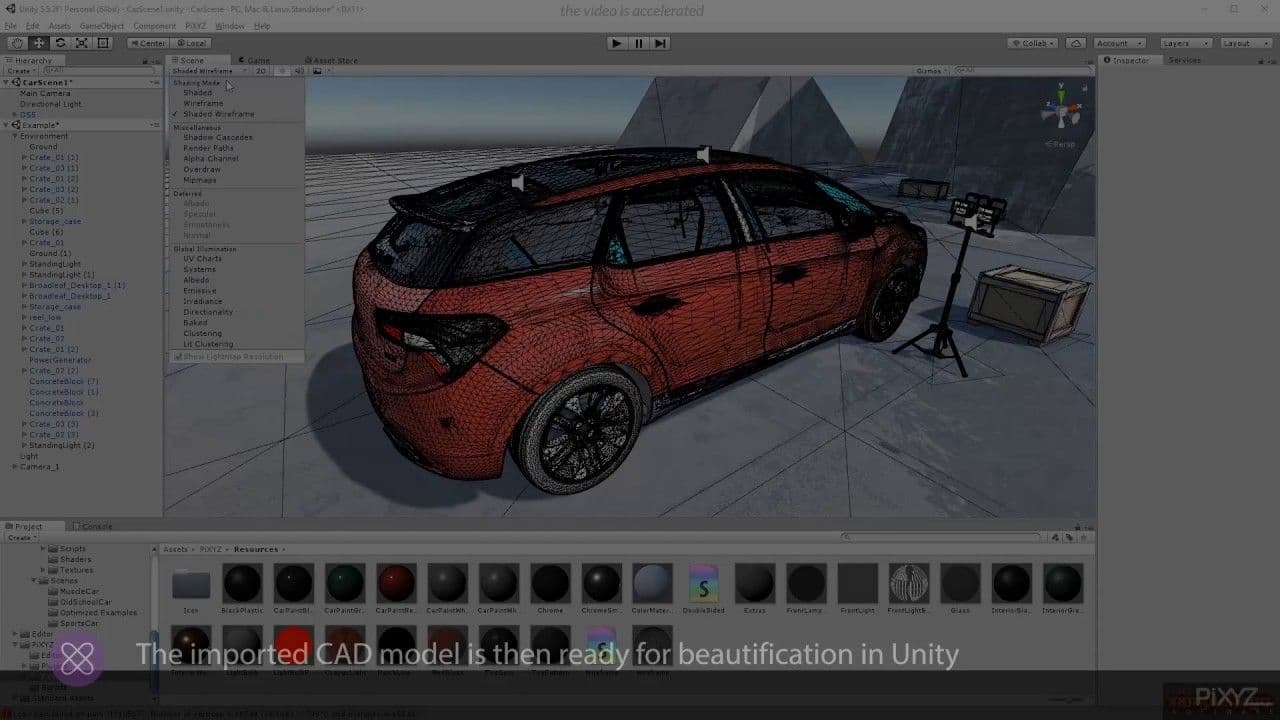
산업용 데이터 형식의 시각화
CAD(컴퓨터 지원 설계) 데이터 또는 BIM(빌딩 정보 모델링) 데이터와 같은 산업 데이터 형식은 일반적으로 엔지니어, 디자이너, 건축가가 제조 제품, 건물 등의 상세한 2D 및 3D 모델을 만드는 데 사용됩니다.
CAD와 BIM 데이터는 협업을 개선하고 컨셉부터 제조까지 걸리는 시간을 단축하는 기능으로 산업 전반에 걸쳐 사용되고 있습니다. 그러나 이러한 데이터의 밀도, 복잡성 및 파일 크기로 인해 대화형 시각화가 어렵습니다.
시각화는 제품 라이프사이클의 모든 단계에서 사용되는 필수 도구이므로 이제 업계에서는 멀티 유저 협업과 의사 결정을 개선하기 위해 실제와 같은 인터랙티브 3D 시각화를 구현하는 실시간 3D 엔진으로 눈을 돌리고 있습니다. 하지만 산업 데이터 형식을 실시간 3D 엔진과 호환되는 형식으로 변환해야 하는 한 가지 극복해야 할 장애물이 남아 있습니다.
그렇다면 기업들은 이 장애물을 어떻게 극복할 수 있을까요? 이러한 격차를 해소하는 데이터 최적화 솔루션을 사용합니다.
이러한 솔루션은 정확한 파라메트릭 표면(BREP 또는 NURBS라고 함)에 의존하는 CAD 파일과 같은 산업 데이터를 가져와 이 데이터를 휴대폰, 태블릿, 증강 현실(AR) 및 가상 현실(VR) 기기와 같은 장치에서 상호작용을 제대로 지원할 수 있는 3D 개체의 삼각형 표현(메시 데이터라고 함)으로 변환하는 솔루션입니다. 이를 통해 팀은 모든 관점에서 모델을 탐색하고 몰입도 높은 방식으로 함께 디자인을 검토하며 궁극적으로 실제 작업을 수행하기 전에 더 나은 의사 결정을 내릴 수 있습니다.
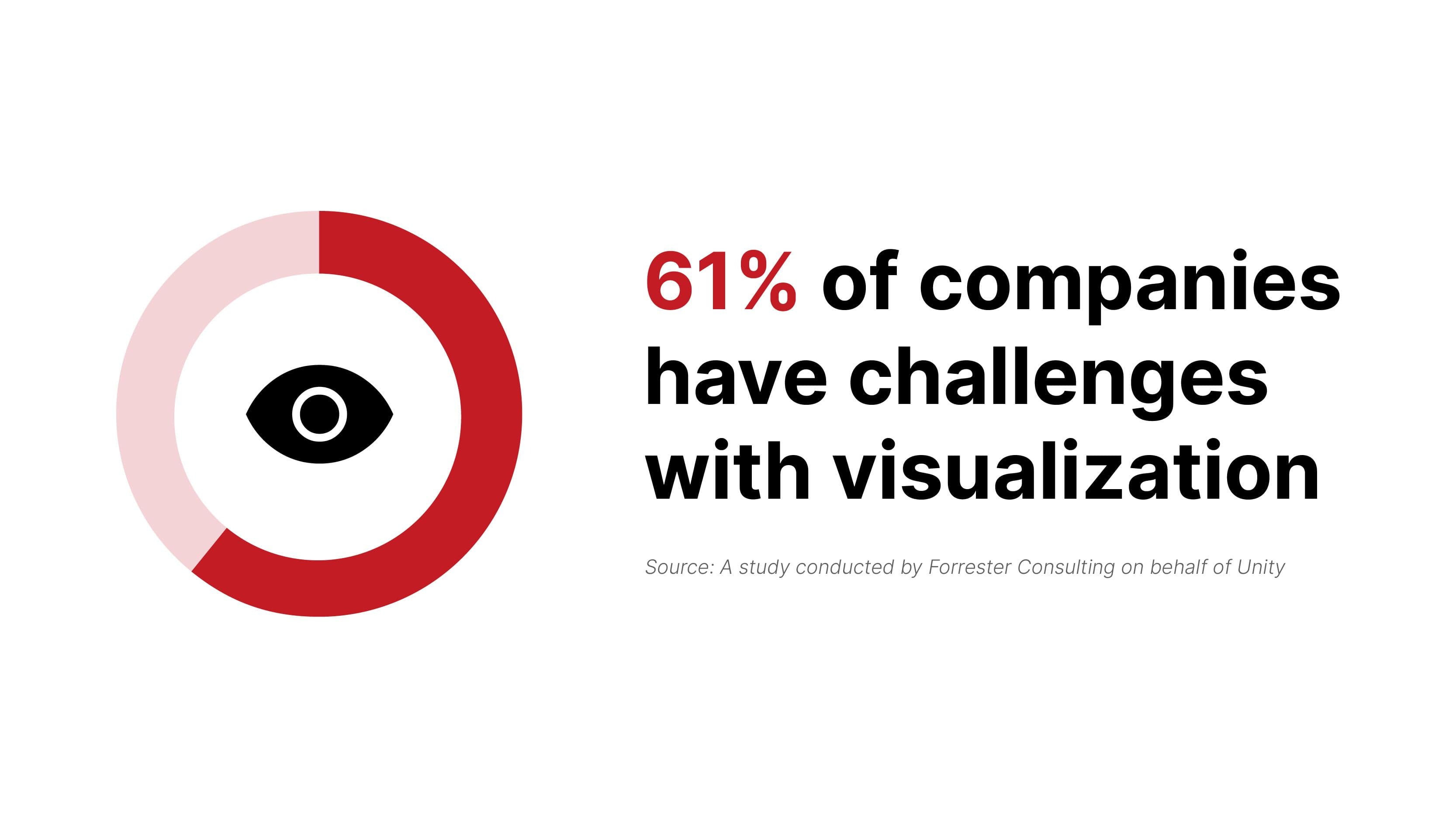
3D 시각화가 중요한 이유는 무엇인가요?
자동차, 로봇, 건물 등 물리적 자산을 만드는 기업에는 다양한 시각화 요구 사항이 있습니다. 이러한 요구를 충족하기 위해 현재 많은 기업이 이미지 및 동영상과 같은 다양한 도구와 경험을 활용하고 있습니다. 하지만 사진 한 장이 천 마디 말보다 가치가 있다면, 동일한 정보를 3D로 제공한다는 것은 어떤 의미일까요?
3D 시각화의 강점은 현실과 유사하게 구현할 수 있다는 점이며, 이를 통해 다음과 같은 다양한 이점을 얻을 수 있습니다:
- 값비싼 물리적 프로토타입에 대한 의존도를 낮추고 설계 및 엔지니어링 결함을 조기에 발견하여 비용 절감
- 팀 간의 협업과 커뮤니케이션을 지원하여 시장 출시 시간 단축
- 기존 멀티미디어 형식을 능가하는 매력적인 방법으로 제품을 선보임으로써 매출을 증대합니다.
사실적이고 사실적인 방식으로 미래 디자인을 제시하여 더 많은 프로젝트 수주하기
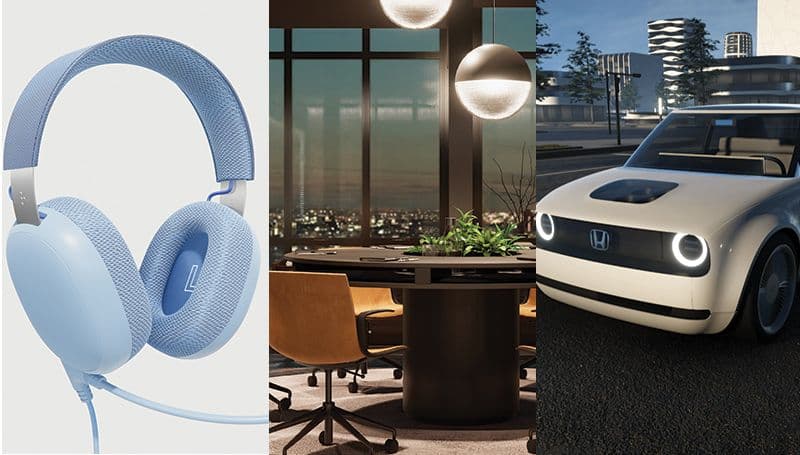
3D 시각화는 어떻게 사용되나요?
3D 시각화는 제품 디자인, 제조, 건축, 인테리어 디자인, 영업 및 마케팅, 교육, 멀티미디어 등 다양한 산업 분야에서 디지털 콘텐츠를 제작하는 데 사용됩니다.
제품 설계 및 제조
3D 시각화는 생산 중 AR 가이드 지원, 가상 조립 프로세스 검증, 기술자 교육, 디지털 팩토리 시뮬레이션을 구현할 수 있는 기능을 제공하여 제조 및 제품 설계 프로세스의 효율성을 높입니다.
2. 건축 및 인테리어 디자인
3D 시각화를 통해 건축가와 인테리어 디자이너는 실시간 BIM 환경을 구축하여 프로젝트 효율성을 높이고 몰입형 설계 검토를 수행하며 설계와 시공을 연결할 수 있습니다.
3. 세일즈 및 마케팅
마케터는 3D 시각화를 사용하여 대화형 제품 컨피규레이터, AR/VR 쇼핑 경험, 가상 이벤트 및 사실적인 렌더링을 생성함으로써 참여를 유도하고 전환율을 높일 수 있습니다.
4. 교육
3D 시각화는 VR 경험을 통해 다양한 학습 스타일을 충족하고 학생들에게 몰입감 있는 원격 강의실 액세스를 제공하는 등 교육을 개선합니다.
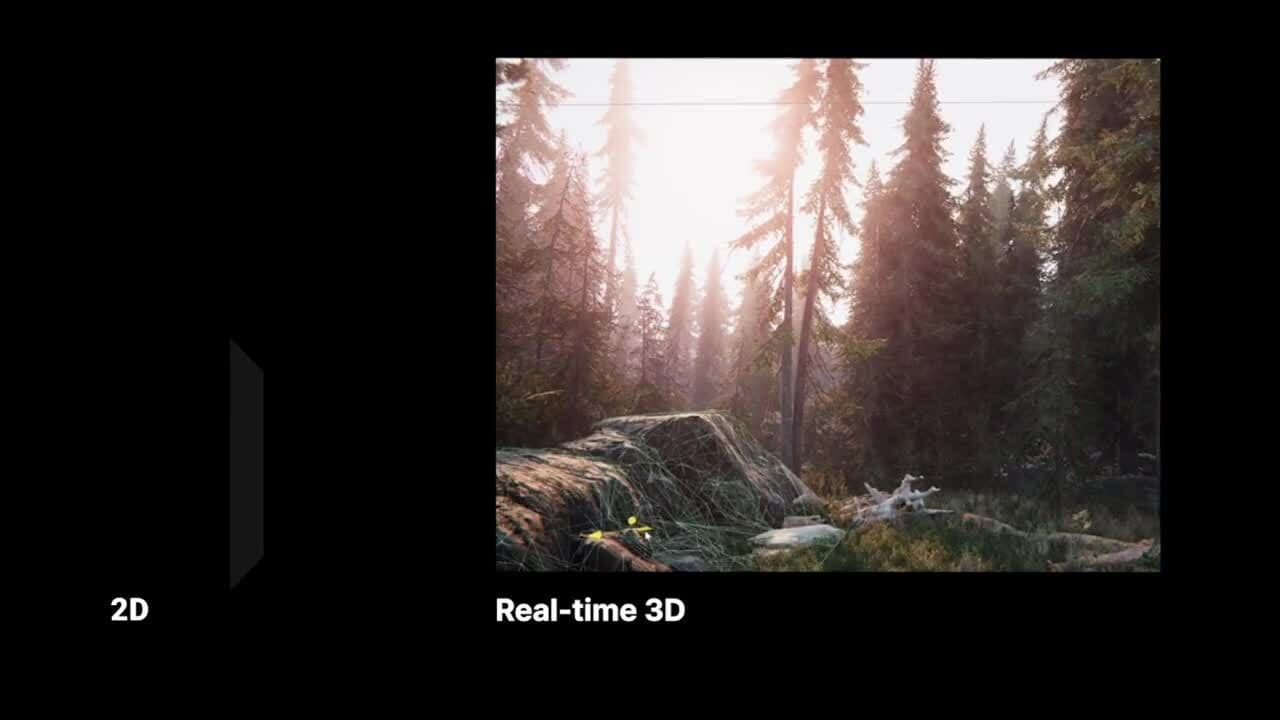
3D 시각화의 미래: 실시간 3D
실시간 3D 소프트웨어를 사용하면 완전한 인터랙티브 3D 모델, 환경 및 전체 가상 세계를 눈 깜짝할 사이에 디지털 방식으로 렌더링할 수 있어 기존 콘텐츠 제작 툴에 비해 상당한 이점을 누릴 수 있습니다.
실시간 3D는 근본적으로 두 가지 경험을 제공합니다.
- 몰입형 경험 - 현실의 디지털 표현이 사실적이고 현실 아날로그 경험의 현실감과 가까워지고 있습니다.
- 인터랙티브 경험 - 사용자가 마치 비디오 게임처럼 자신의 경험을 정확하게 제어할 수 있습니다.
제작 과정에서 실시간 3D를 사용하면 애니메이션, 오디오 및 비디오, 시네마틱, 환경, 조명, 사용자 인터페이스, 시각 효과 등과 같은 컴포넌트를 빠르게 반복하고 조정할 수 있습니다. 개발 중 언제든지 작업을 실시간으로 미리 볼 수 있으며, 즉시 시각화가 진행되므로 사용자는 결과물이 렌더링될 때까지 기다릴 필요가 없습니다.
실시간 3D 콘텐츠가 제작되면 모바일 디바이스, 컴퓨터, AR 및 VR 디바이스, 기타 플랫폼에 배포할 수 있습니다. 사용자는 이러한 '라이브' 애플리케이션과 실시간으로 상호 작용할 수 있으므로 비대화형 정적 콘텐츠보다 근본적으로 더 매력적이고 몰입감 있는 경험을 할 수 있습니다.
세상은 3차원으로 이루어져 있습니다. 우리는 3D로 움직이고, 생각하고, 경험합니다. 가상 환경이 복제하는 확장된 공간적 존재감은 문제 해결력 향상, 지식 유지력 향상, 참여도 및 이해도 제고 등 다양한 이점을 제공합니다.
3D 렌더링이란 무엇인가요?
3D 렌더링은 컴퓨터에 저장된 3차원 데이터를 기반으로 빛을 사용하여 이미지를 생성하는 3D 시각화 프로세스의 한 단계입니다.
3D 렌더링과 관련하여 실시간 렌더링은 비디오 게임이나 인터랙티브 그래픽에서 가장 일반적으로 사용됩니다. 실시간 렌더링은 빛을 사용하여 이미지를 생성하지만 훨씬 더 빠른 속도로 이미지를 생성하므로 장면이 실시간으로 나타나고 사용자는 렌더링이 개발되는 동안 렌더링과 상호 작용할 수 있습니다.
3D 렌더링이 중요한 이유는 무엇인가요?
3D 렌더링은 3D 시각화를 가능하게 하기 때문에 중요합니다. 3D 모델을 사실적인 효과가 적용된 제품, 건물 등의 2D 이미지로 변환할 수 있는 프로세스 내 단계입니다.
3D 렌더링을 통해 건축가, 디자이너, 엔지니어는 이해관계자와 손쉽게 협업하고, 아이디어를 시각화하고, 개발 시작 전에 실수를 파악할 수 있습니다.
4차 산업혁명(4IR) 및 메타버스와 같은 새로운 트렌드로 인해 데이터의 3D 렌더링이 그 어느 때보다 중요해지고 있습니다.
3D 시각화 대 3D 렌더링
흔히 두 가지 다른 프로세스로 설명되지만, 3D 시각화와 3D 렌더링은 서로 연결되어 있습니다.
3D 시각화는 제품, 건물 등의 디자인을 보여주기 위해 3D 모델을 만드는 과정입니다. 3D 렌더링은 이 프로세스의 한 단계로, 3D 모델 없이는 시작할 수 없으며 시각화는 실제 세계를 겹쳐서 보여주기 때문에 공간적(3D)이어야 합니다.
3D 렌더링과 3D 시각화를 함께 사용하면 몰입도 높고 매력적인 콘텐츠를 제작할 수 있습니다.
